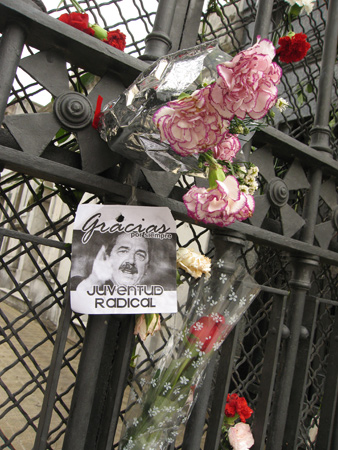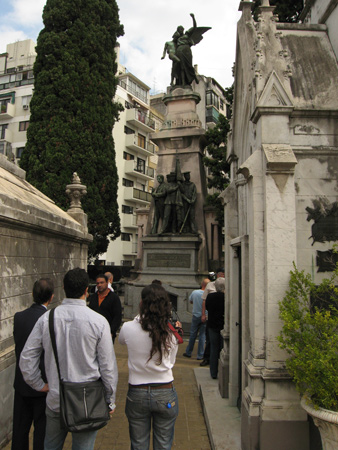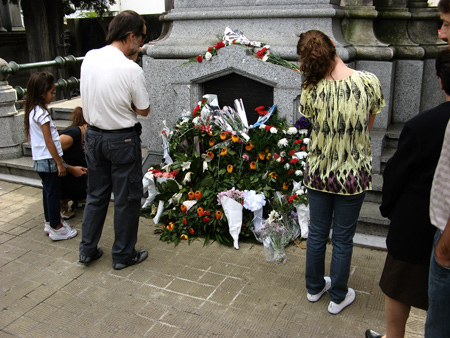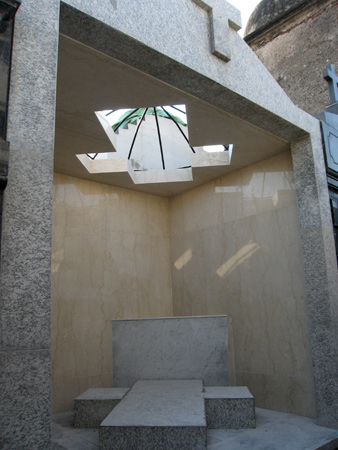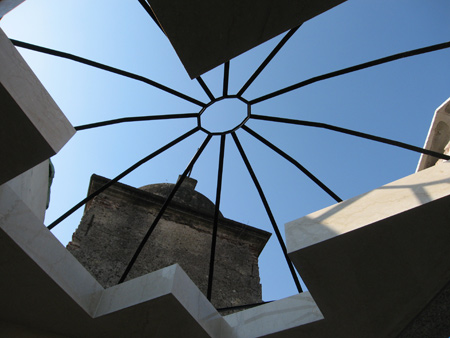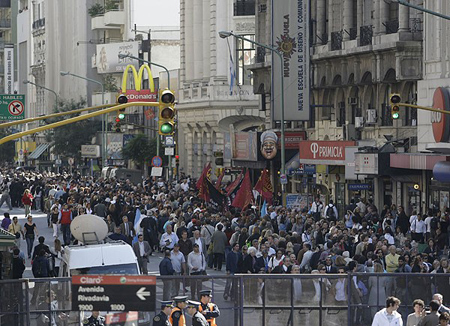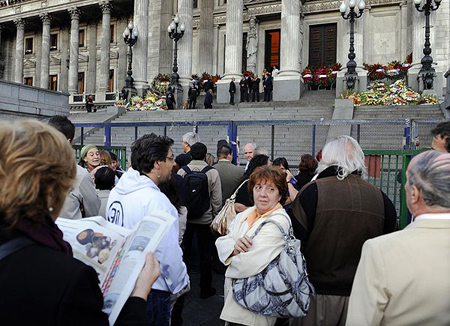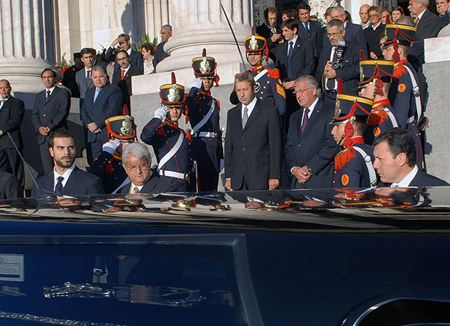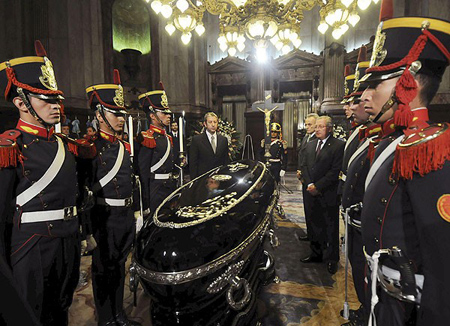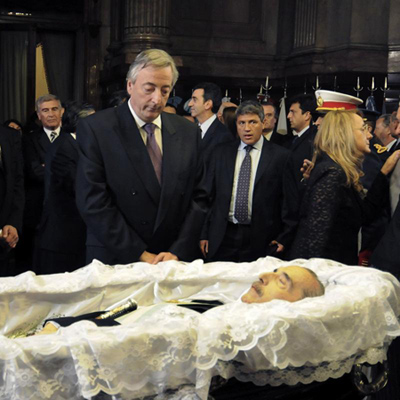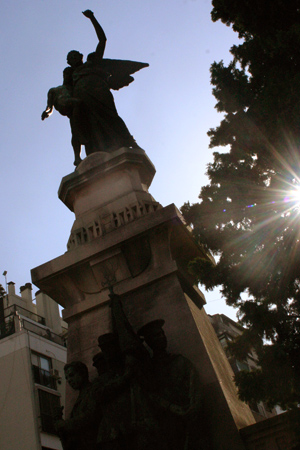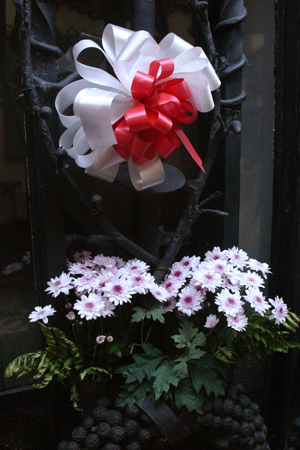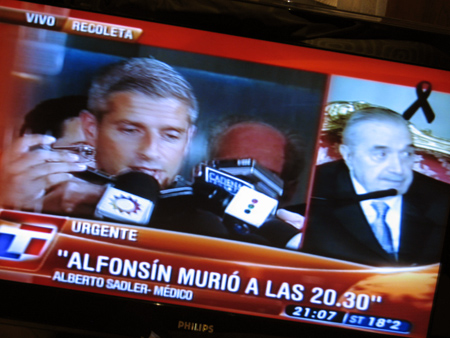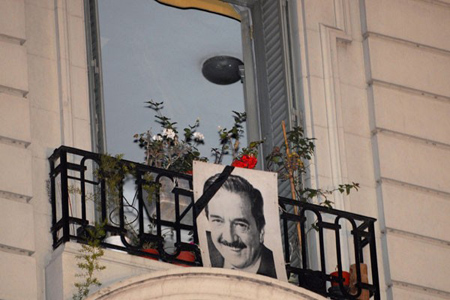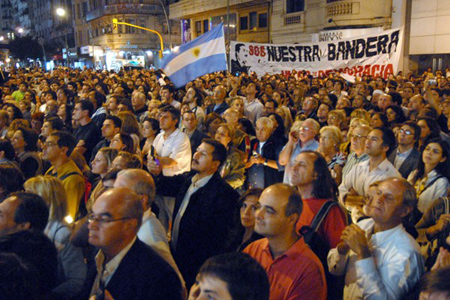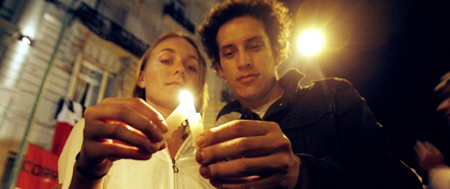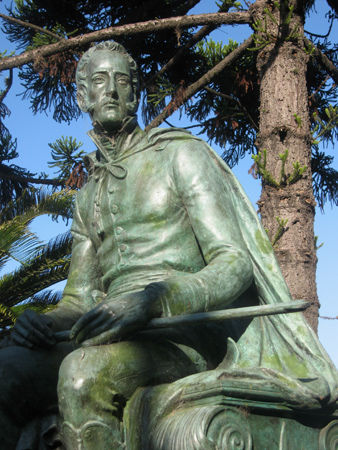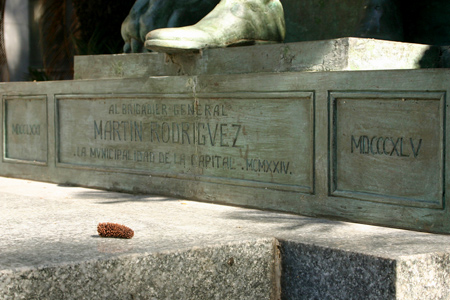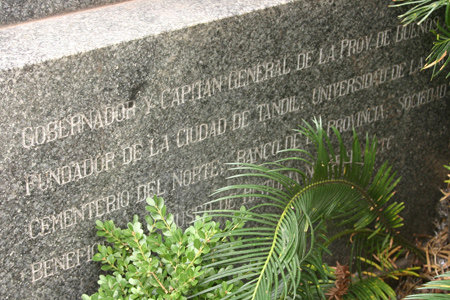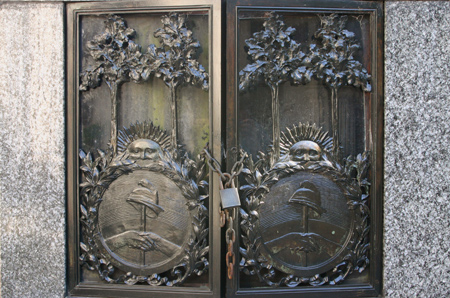After ending the wake around 10:00, a mass for Alfonsín was said by his cousin, Archbishop José María Arancedo, on the steps of the National Congress:
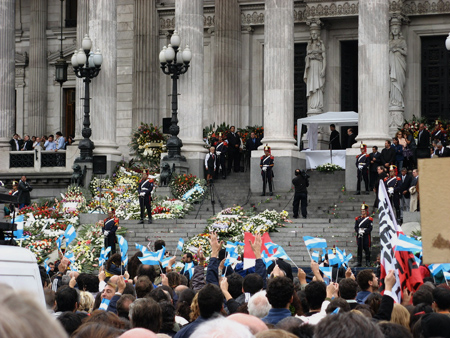
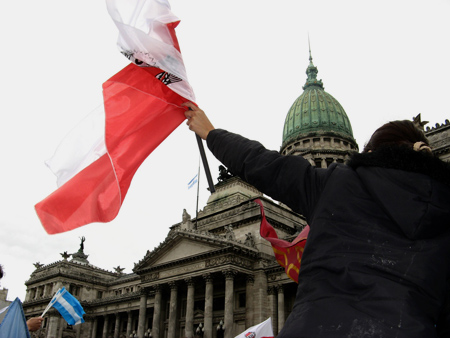
Accompanied by the mounted Honor Guard, the casket moved slowly up Avenida Callao toward Recoleta Cemetery. Barricades disappeared by the time the casket reached Avenida Corrientes, & several hundred people followed the funeral procession:
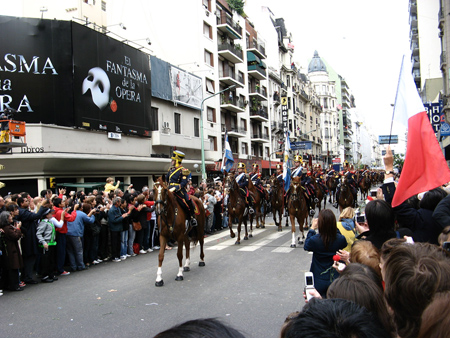
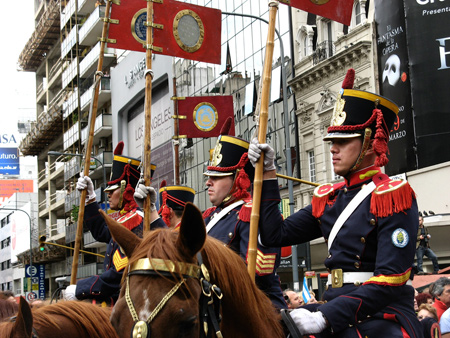
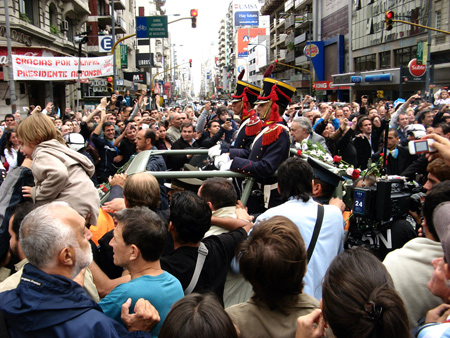
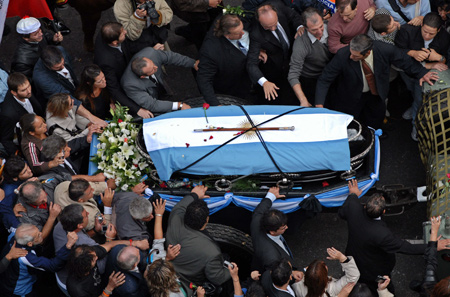
Meanwhile, everything was under control at Recoleta Cemetery, but somehow a few people had made it past the Policia Federal. Crowds of eventually three to four people deep waited for the procession to arrive at the intersection with Guido:
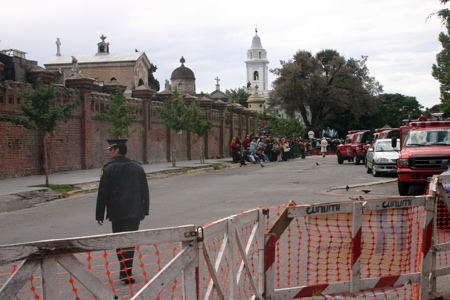
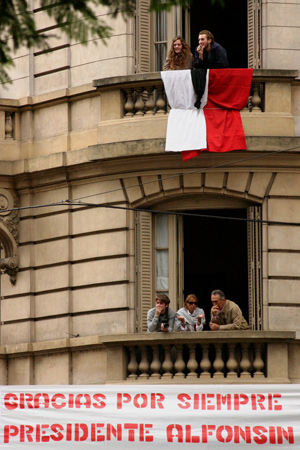
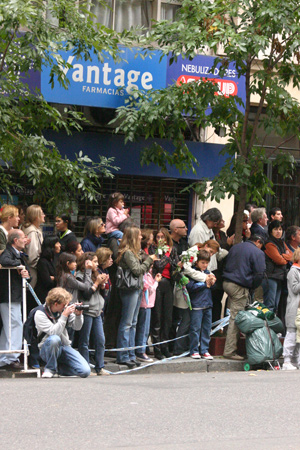
The motorcycle brigade announced Alfonsín’s arrival, blaring their sirens & making sure the way was clear:
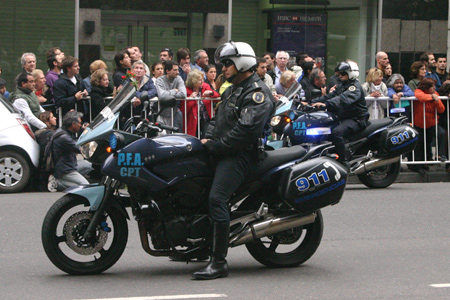
Then the Horse Guard came into sight:
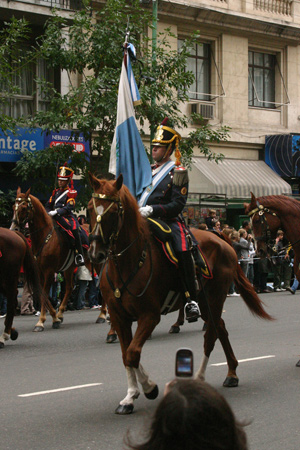
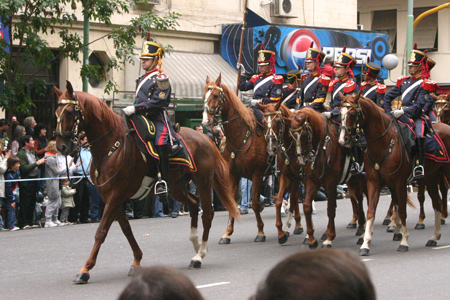
So many people accompanied the casket at this point (friends, family, followers, & what seemed like hundreds of press photographers), that it was difficult to see. The pics didn’t turn out very well, & at one point I stopped trying to capture a good shot in order to experience what was going on around me.
Trying to get as close to the entrance gate as possible, we went around Vicente López & found ourselves face to face with the Horse Guard. The horses were surprisingly calm given the amount of activity around them:
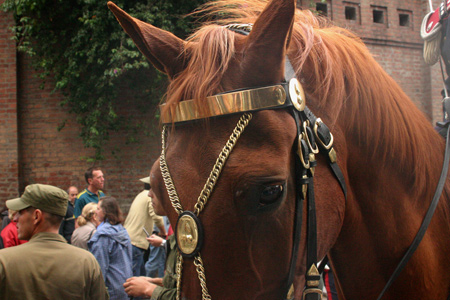
Then we realized that the casket was still making its way to the cemetery. Everyone wanted a photo; everyone wanted one last look at Alfonsín. Police cars, horses & human barricades began to clear a path for the casket to keep moving. In the process, I was separated from Jeff… the police really had no idea what they were doing as throngs of people were pushed around & for several minutes the procession was stuck. At least I got a better look at the casket & a few decent pics:
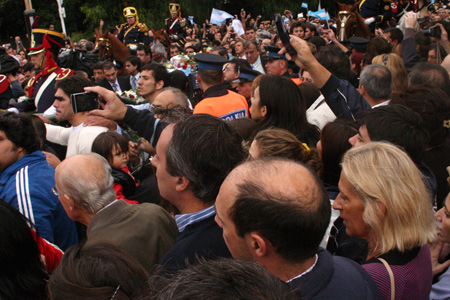
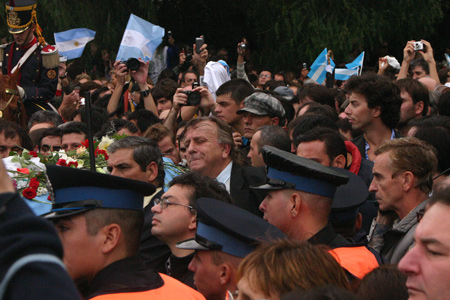
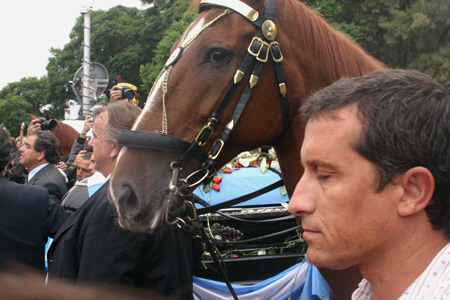
Unable to find Jeff, I opted to return home & see the rest on tv. There was little chance of entering the cemetery given the general confusion. Some family members didn’t even make it inside before the gate was shut. Two hours & eight eulogies later, the casket was finally taken into the crypt… not an easy task since the staircase has about a 60º angle! The Granaderos had to let the cemetery caretakers do their job:
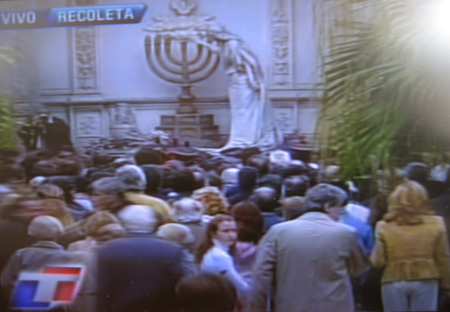
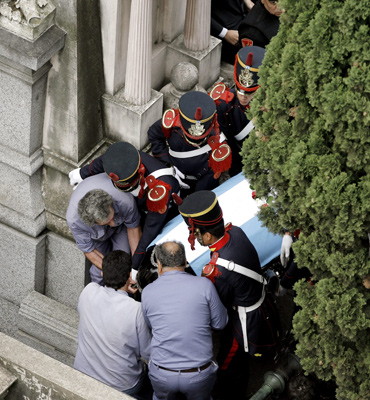
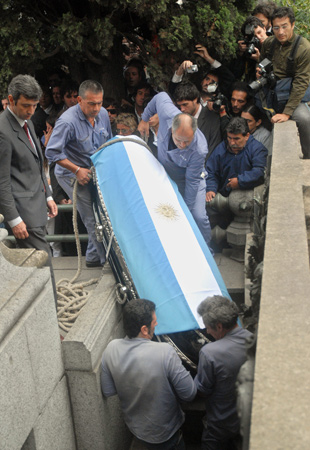
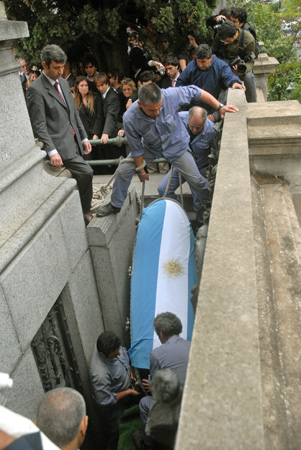
Photo credits: 1-5 by Marcelo Metayer / 6 + 18-20 by EFE / 7-17 by Robert Wright.
